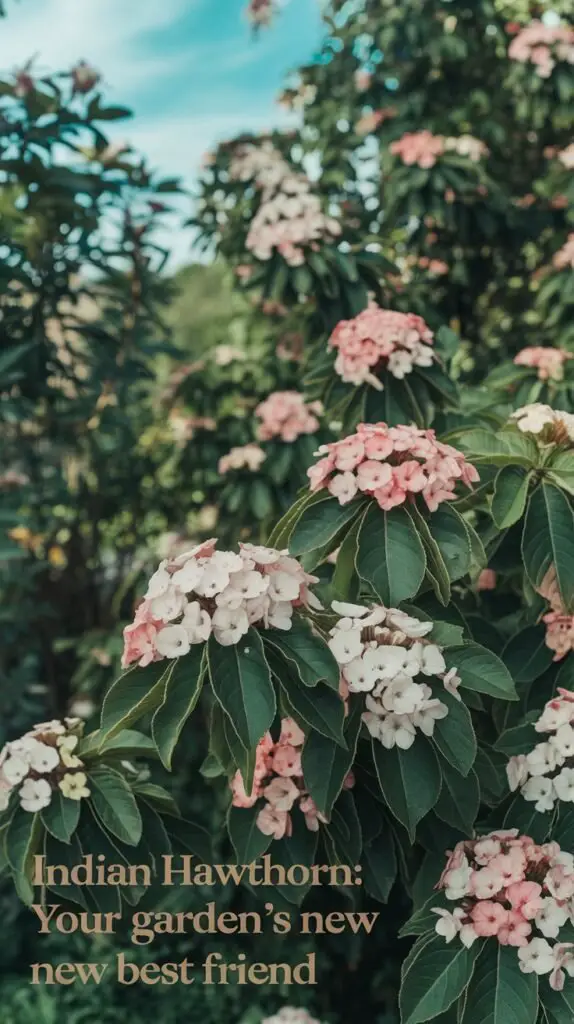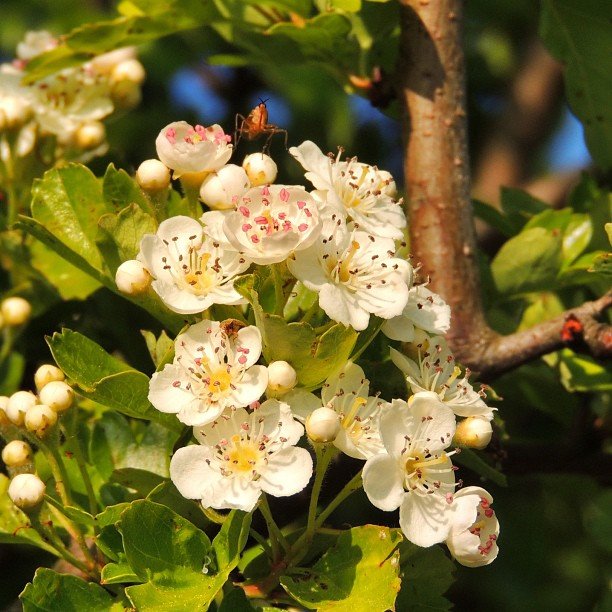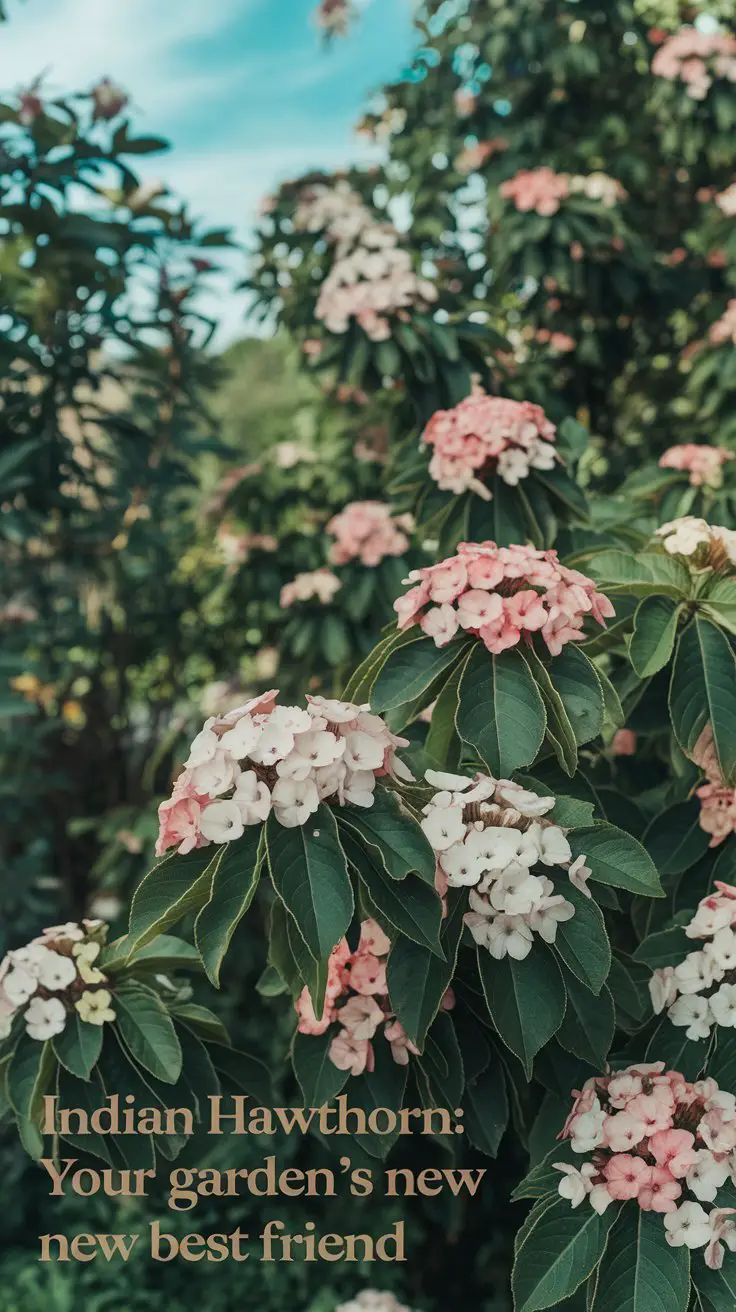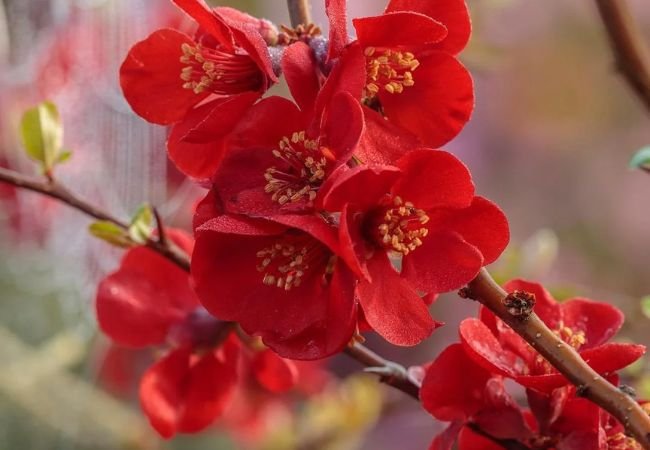Discover Indian Hawthorn, the easy-care shrub perfect for any garden. Learn how to grow, use and love this versatile plant. Tips for newbies and green thumbs alike!
Hey there, garden lovers! Today we’re gabbing about a plant that’s been catching my eye lately – the Indian Hawthorn. Don’t let the fancy name fool you; this little beauty is as chill as they come. Let’s dig in!
Here’s the information chart for the Hawthorn flower:
| Aspect | Details |
|---|---|
| Botanical Name | Crataegus spp. |
| Common Name | Hawthorn |
| Plant Zone | Zones 4-7 (USDA) |
| Sun Exposure | Full sun to partial shade |
| Soil Type | Well-draining soil, adaptable to various soil types |
| Watering | Moderate, drought-tolerant once established |
| Growth Habit | Deciduous tree or shrub, spreading |
| Height/Spread | 15-30 feet tall, 15-25 feet wide |
| Special Features | Clusters of white or pink flowers in spring, thorny branches, produces small red or orange berries, attracts pollinators, wildlife-friendly |
What’s the Deal with Indian Hawthorn?

So, Indian Hawthorn (science folks call it Rhaphiolepis indica) is this cool shrub that’s originally from Asia. But don’t worry, it’s made itself right at home in the USA, especially where it’s nice and warm. It’s the kind of plant that makes your neighbors go, “Ooh, what’s that?” If you’re curious about its native habitat, the U.S. Forest Service has some interesting info.
Spotting Indian Hawthorn in the Wild (or Your Neighbor’s Yard)
- Leaves: Think dark green and kinda leathery. They’re oval and stick around all year.
- Flowers: Picture cute little blooms in white or pink, hanging out in clusters.
- Size: These guys usually chill at about 3 to 6 feet tall and wide. Not too big, not too small.
- Fruit: After the flowers do their thing, you get these blue-black berries. Birds go nuts for ’em!
Growing Your Own Indian Hawthorn Squad

Thinking of adding some to your yard? Here’s the scoop:
- Sun: They’re not picky – full sun or partial shade, they’re cool with both.
- Soil: As long as it drains well, you’re golden.
- Water: Give ’em a good drink when they’re babies, but once they’re settled, they’re pretty low-maintenance.
- Weather: They can handle a bit of cold, but they’re happiest where it’s warm.
Want more nitty-gritty details on planting and care? The folks at the University of Florida have got you covered.
Where to Show Off Your Indian Hawthorn
These plants are super versatile:
- Line ’em up for a sweet hedge
- Sprinkle ’em through your flower beds
- Shape one into a cute little tree
- Pot ’em up for your patio or deck
People love ’em because they look good all year and don’t ask for much. It’s like having a low-maintenance friend in your garden!
Why Indian Hawthorn is the MVP of Plants
- Lazy gardener’s dream: Once they’re settled, they pretty much take care of themselves.
- Drought tough: Forgot to water? No sweat (literally).
- Bird magnet: Your feathered friends will thank you for the snacks.
- Always dressed up: Looks good even when it’s not flowering.
For more on how Indian Hawthorn can attract wildlife to your garden, check out this guide from the University of Florida.
Not All Sunshine and Roses
Okay, let’s keep it real. Sometimes these guys can run into trouble:
- Leaf spot: Nasty fungus that leaves dark spots on the leaves.
- Root rot: Happens if they’re sitting in water too long.
- Cold feet: Super cold weather can mess ’em up.
If you hit any bumps, the North Carolina State Extension site has some solid advice on common pests and diseases.
Random Indian Hawthorn Trivia to Impress Your Friends
- The name’s Greek: “Rhaphiolepis” is Greek for “needle” and “scale.” Fancy, huh?
- Berries are edible: But don’t get excited – they’re not exactly tasty.
- Variety is the spice of life: There are tons of different types, with all sorts of pink and white shades.
Wrapping It Up So there you have it, folks! Indian Hawthorn is like that easy-going friend who’s always welcome at the party. It looks good, doesn’t cause drama, and fits in just about anywhere. Whether you’re a garden guru or just starting out, this plant’s got your back.
Remember, gardening’s all about having fun and learning as you go. So don’t stress if things aren’t perfect right off the bat. With a little love (and not too much fuss), your Indian Hawthorn will be the talk of the neighborhood in no time. Happy planting!
For more gardening tips and plant care guides, visit usagardenhub.com.






2 Comments on “Indian Hawthorn : Your Garden’s New Best Friend”